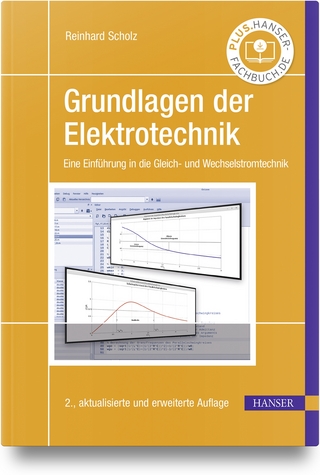
Theory of Magnetostatic Waves
Springer-Verlag Berlin and Heidelberg GmbH & Co. K
978-0-387-97969-4 (ISBN)
- Titel ist leider vergriffen;
keine Neuauflage - Artikel merken
Magnetostatic Waves will thus serve not only as an introduction to an active area of research, but also as a handy reference for workers in the field.
1. Introduction to Magnetism.- 1.1. Magnetic Properties of Materials.- 1.1.1. Diamagnetism.- 1.1.2. Paramagnetism.- 1.1.3. Ferromagnetism.- 1.1.4. Ferrimagnetism and Antiferromagnetism.- 1.2. Spinning Top.- 1.3. Magnetism.- 1.3.1. Equation of Motion.- 1.3.2. Gyromagnetic Ratio.- 1.4. Magnetic Moments of Atoms and Ions.- 1.4.1. Angular Momentum in Quantum Mechanics.- 1.4.2. Construction of Ground States of Atoms and Ions.- 1.5. Elements Important to Magnetism.- Problems.- 2. Magnetic Susceptibilities.- 2.1. Diamagnetism.- 2.2. Paramagnetism.- 2.3. Weiss Theory of Ferromagnetism.- 2.4. Neel Theory of Ferrimagnetism.- 2.5. Exchange Interaction.- 2.5.1. Uniform Magnetization.- 2.5.2. Nonuniform Magnetization.- 2.6. Magnetocrystalline Anisotropy.- 2.6.1. Uniaxial Anisotropy.- 2.6.2. Cubic Anisotropy.- 2.6.3. Coordinate Transformations.- 2.7. Polder Susceptibility Tensor.- 2.7.1. Equation of Motion for the Magnetization.- 2.7.2. Susceptibility Without Exchange or Anisotropy.- 2.7.3. Susceptibility with Exchange and Anisotropy.- 2.8. Magnetic Damping.- Problems.- 3. Electromagnetic Waves in Anisotropic Dispersive Media.- 3.1. Maxwell's Equations.- 3.2. Constitutive Relations.- 3.3. Instantaneous Poynting Theorem.- 3.4. Complex Poynting Theorem.- 3.5. Energy Densities in Lossless Dispersive Media.- 3.6. Wave Equations.- 3.7. Polarization of the Electromagnetic Fields.- 3.8. Group and Energy Velocities.- 3.9. Plane Waves in a Magnetized Ferrite.- 3.9.1. Propagation Parallel to the Applied Field.- 3.9.2. Propagation Perpendicular to the Applied Field.- 3.10. The Magnetostatic Approximation.- Problems.- 4. Magnetostatic Modes.- 4.1. Walker's Equation.- 4.2. Spin Waves.- 4.3. Uniform Precession Modes.- 4.3.1. Normally Magnetized Ferrite Film.- 4.3.2. Tangentially Magnetized Ferrite Film.- 4.3.3. Ferrite Sphere.- 4.4. Normally Magnetized Film: Forward Volume Waves.- 4.5. Tangentially Magnetized Film: Backward Volume Waves.- 4.6. Tangentially Magnetized Film: Surface Waves.- Problems.- 5. Propagation Characteristics and Excitation of Magnetostatic Waves.- 5.1. Energy Velocities for Magnetostatic Waves.- 5.2. Propagation Loss.- 5.2.1. Relaxation Time for Propagating Modes.- 5.2.2. Surface Waves.- 5.2.3. Volume Waves.- 5.2.4. Summary of the Phenomenological Loss Theory.- 5.3. Mode Orthogonality and Normalization.- 5.3.1. Forward Volume Waves.- 5.3.2. Backward Volume Waves.- 5.3.3. Surface Waves.- 5.4. Excitation of Magnetostatic Waves.- 5.4.1. Common Excitation Structures.- 5.4.2. Forward Volume Waves.- 5.4.3. Backward Volume Waves.- 5.4.4. Surface Waves.- 5.4.5. Discussion of Excitation Calculations.- Problems.- 6. Variational Formulation for Magnetostatic Modes.- 6.1. General Problem Statement.- 6.2. Calculus of Variations.- 6.2.1. Formulation for One Independent Variable.- 6.2.2. Extensions to Three Independent Variables.- 6.3. Small-Signal Functional for Ferrites.- 6.4. Interpretation of the Functional.- 6.5. Stationary Formulas.- 6.6. Stationary Formula Examples with Forward Volume Waves.- 6.6.1. Large k Limit.- 6.6.2. Improved Approximation.- 6.6.3. Effect of Medium Inhomogeneity.- Problems.- 7. Optical-Magnetostatic Wave Interactions.- 7.1. Symmetric Dielectric Waveguides.- 7.1.1. TE Modes.- 7.1.2. TM Modes.- 7.1.3. Optical Mode Orthogonality and Normalization.- 7.2. Magneto-Optical Interactions.- 7.2.1. Can You Tell the Difference Between$$ /bar /mu $$ and $$ /bar /varepsilon $$?.- 7.2.2. Definition of Magnetization at High Frequencies.- 7.2.3. Symmetry Requirements on the Permittivity.- 7.3. Coupled-Mode Theory.- 7.3.1. Coupled-Mode Equations.- 7.3.2. Energy Conservation.- 7.3.3. Solutions to the Coupled-Mode Equations.- 7.4. Scattering of Optical Guided Modes by Magnetostatic Waves.- 7.4.1. Coupled-Mode Equations.- 7.4.2. Coupling Coefficients.- 7.4.3. Tightly Bound Optical Mode Approximation.- 7.5. Anisotropic Bragg Diffraction.- Problems.- Appendix: Properties of Yttrium Iron Garnet.
| Zusatzinfo | biography |
|---|---|
| Verlagsort | Berlin |
| Sprache | englisch |
| Gewicht | 510 g |
| Einbandart | gebunden |
| Themenwelt | Naturwissenschaften ► Physik / Astronomie ► Elektrodynamik |
| ISBN-10 | 0-387-97969-7 / 0387979697 |
| ISBN-13 | 978-0-387-97969-4 / 9780387979694 |
| Zustand | Neuware |
| Haben Sie eine Frage zum Produkt? |
aus dem Bereich


